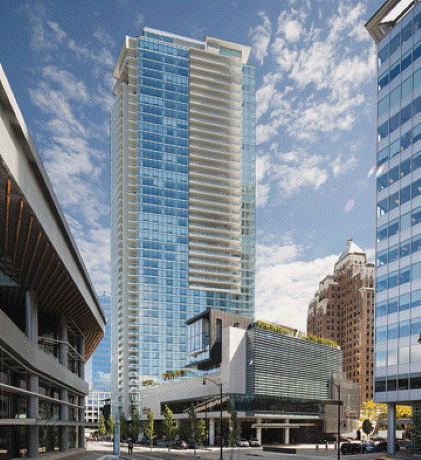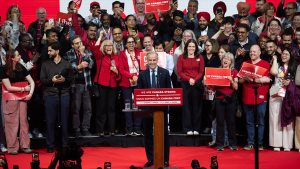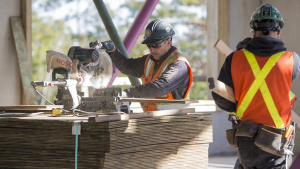From the viewpoint of a trade contractor, it was a huge job. In fact from any one’s point-of-view it was a huge job.
FEATURE | VRCA Awards
From the viewpoint of a trade contractor, it was a huge job. In fact from any one’s point-of-view it was a huge job.
The “it” was the Fairmont Pacific Rim Hotel and Residences across from the new Trade and Convention Centre in downtown Vancouver.
The $22 million electrical component of the 48-storey building won a Vancouver Regional Construction Association (VRCA) Silver Award of Excellence for Bridge Electric in the electrical contractor over $2 million category.
The general contractor was 299 Burrard, part of Westbank Developments.
There were no end of challenges to the job. They included the sheer size of the project at 1.2 million square feet and a firm deadline set to accommodate the 2010 Winter Olympics.
Other challenges included a stipulated price contract that had to be based on 30 per cent of design development (scope) drawings.
There were complications brought on by the height of the building, combined with restricted access. In addition to being next door to the convention centre, access was complicated by security issues surrounding Olympic sites.
Bridge prepared for the Fairmont project like an army getting ready for an invasion. They planned and planned, and then planned some more. In fact, Bridge invested 16,000 hours in preplanning.
They also visited two large projects in the U.S. to help gain perspective.
To get a handle on the size of the Fairmont Pacific Rim, some hard facts are useful. It is larger than either the new convention centre or the Shangri-La Hotel. The job included two 3,500 KVA unit subs, a 1,500 KW emergency generator, more than 400 panel boards, 17,000 light fixtures and 17 elevators.
Handling a job that size involved not only a great deal of advance planning, but it also involved some innovation.
Pre-fab construction was part of that.
In the parking area of the hotel they created a 10,000 square foot workshop and pre-fabricated as much as they possibly could.
This included items such as electrical panel boards, which were prefabricated and pre-wired before being sent upstairs.
Materials handling efficiency was a priority.
Bridge convinced 299 Burrard that it was important to bring Kerri O’Brien to Vancouver from Toronto.
O’Brien is a well-known expert in the field of materials handling in the construction industry. He conducted seminars, not just for Bridge, but for other trade contractors working on the project.
“We felt if all the trades would buy into the concept it would work that much better for us,” said Glenn Wilson, senior project manager for Bridge.
Bridge Electric worked with their suppliers to have them remove items from individual packages and pre-package them specifically for this job – floor by floor.
When materials arrived at the site everything for a specific floor would be put on a pallet, shrink wrapped and delivered – before electricians arrived.
Deliveries were given only a 15-minute window within a pre-set schedule to coincide with time booked for the crane. If they missed that window, they were sent away and told to come back the next day.
The company also came up with an enforced “no fetch” policy.
Everything a worker needed was supposed to be at the worksite.
“Electricians are well-trained and highly skilled. They are also expensive,” said Kerri Kidd, senior superintendent and a former electrician. “They should be doing electrical work and nothing else”.
A 10 cent lock nut, he said, can turn into a $20 lock nut if the electrician has to go all the way from the top of a tower to the ground level to find one.
Efficient time management was all important.
Toilet facilities were located throughout the building. There were lunch and coffee stations always within two-floors of where the electricians were working.
In bad weather tents were supplied for lunch rooms.
Wilson and Kidd claim that on any highrise job the biggest time waster of all is the arrival of the coffee wagon. They made sure a coffee wagon wasn’t required. They even banned the use of private cell phones.
When some electricians complained that they depended on their cell phones to tell the time, Bridge provided them with watches.
To make sure everyone understood “the rules of the road” Bridge had a formal project orientation agreement with their employees. It outlined such things as the no fetch policy and spelled out the responsibilities of both the company and the workers.











Recent Comments
comments for this post are closed